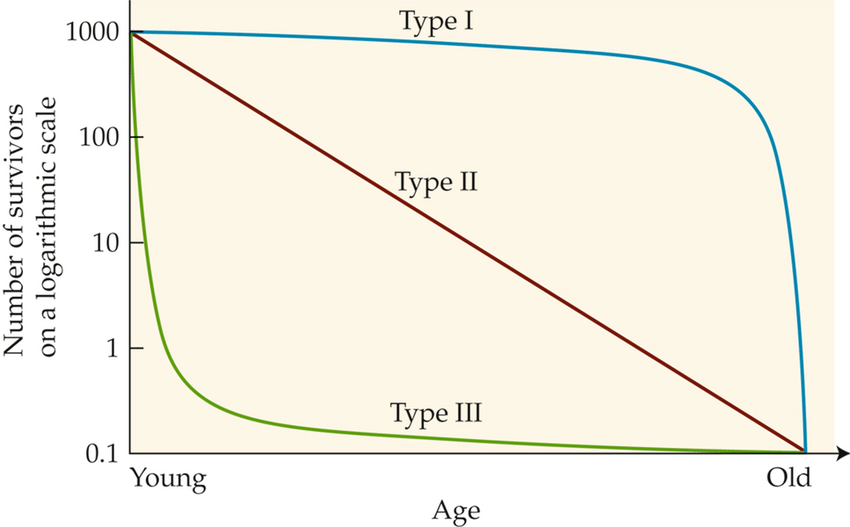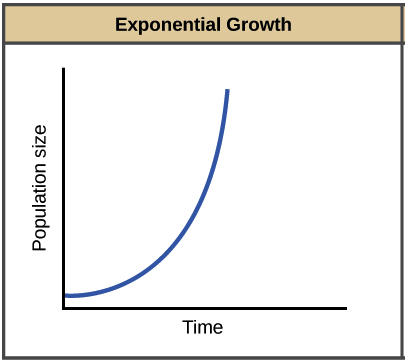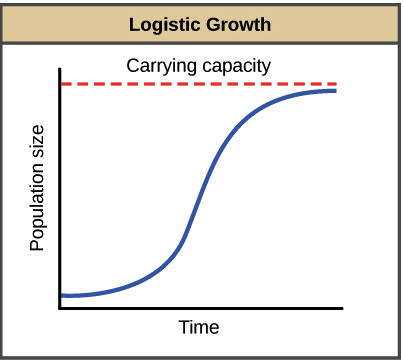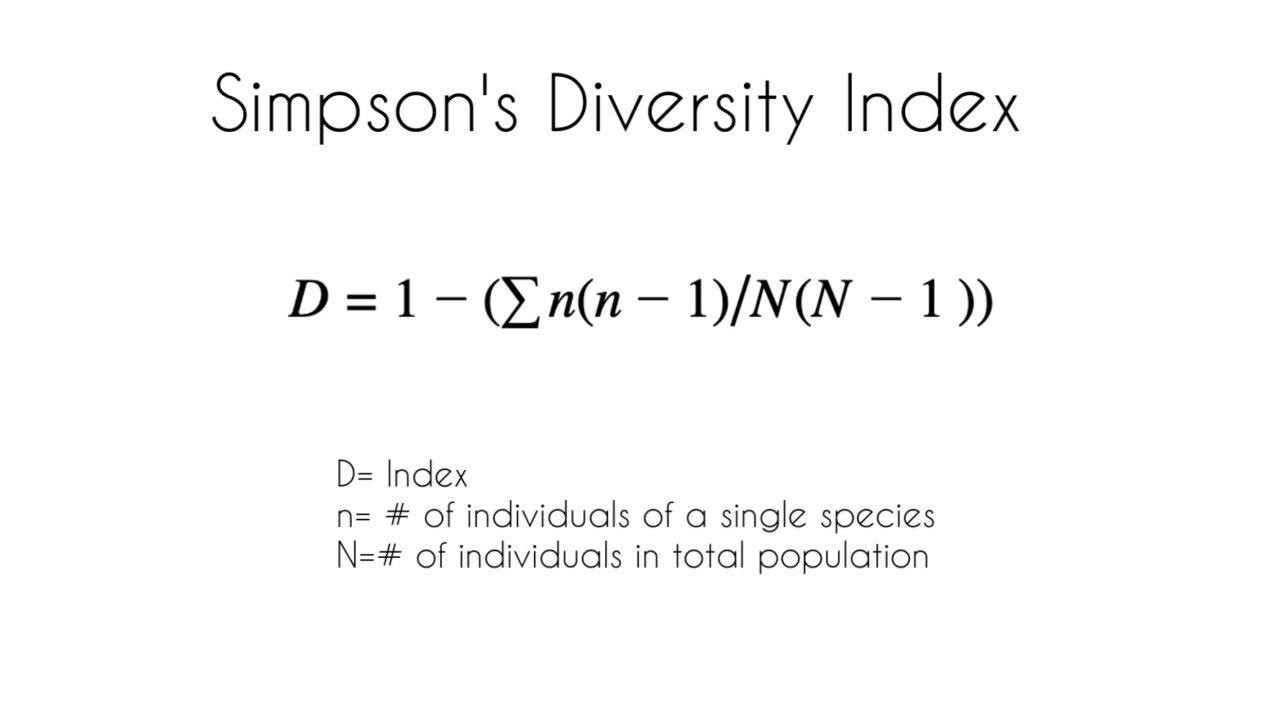AP Biology Ecology Unit
Chapter 52: An Introduction to Ecology and the Biosphere:
Earth’s Climate Varies by Latitude and Season and is Changing Rapidly:
- <<Ecology: the scientific study of the interactions between organisms and the environment<<
- these interactions are organized in a hierarchy from the individual organism to the entire planet
- Climate: the long-term prevailing weather conditions in a given area
- Four Key Components:
- temperature
- Precipitation
- Sunlight
- Wind
- Climate patterns can be described in terms of two scales:
- Macroclimate: work at the global, regional, or local level
- the changing angle of the sun over the year, bodies of water, and mountains exert seasonal, regional, and local effects
- Microclimate: determined by fine-scale variations such as sunlight and temperature differences under a log compared with the surrounding forest floor
- Climate Change: a directional change to the global climate that lasts three decades or more (as opposed to short-term changes in the weather)
- increasing carbon dioxide and other greenhouse gas concentrations are warming Earth, wind and precipitation patterns are shifting, and extreme weather events are occurring more frequently
- changes in climate can alter the population sizes or distribution of many species, some species will not be able to shift their ranges quickly enough to survive
The Distribution of Terrestrial Biomes Controlled by Climate and Disturbance:
- Biomes: are the major types of ecosystems that occupy very broad geographic regions
- The importance of climate, especially precipitation and temperature, are reflected in the climograph for the major biomes of North America
- Types of Biomes:
Interactions Between Organisms and the Environment Limit the Distribution of Species:
- Species distributions are a consequence of both ecological factors and evolutionary history
- dispersal of species may be limited by evolutionary history combined with geographic factors
- Biotic and abiotic factors also limit distribution:
- Biotic Factors: include interactions with other species through predation and herbivory, parasites, pathogens, and competing organisms
- Abiotic Factors: the nonliving, chemical, and physical components
- water, oxygen, salinity, sunlight, and soil
- Both biotic and abiotic factors influence the reproductive fitness of individuals in a population and are major forces of natural selection
Chapter 53: Population Ecology:
Biotic and Abiotic Factors Affect Population Density, Dispersion, and Demographics:
Population: a group of individuals of a single species living in the same general area
Population Ecology: explores how biotic and abiotic factors influence the density, distribution, size, and age structure of populations
Three fundamental characteristics of the organisms in a population are the following:
- Density: the number of individuals per unit area or volume, increases by births or immigration and decreases by deaths or emigration
Dispersion: the pattern of spacing among individuals with the boundaries of the population
- Different types of Dispersion:
- Clumped: individuals in patches, usually around a required resource
- Uniform: evenly spaced dispersion is often the result of antagonistic interactions
- Random: shows unpredictable spacing, occurs in the absence of strong attractions or repulsions among individuals or where resources are relatively constant across an area
Demography: the study of vital statistics of a population, especially birth, death, and migration rates
Graphic way to show birth and death rates in a population is a survivorship curve

Type I Survivorship Curve: shows low death rates during early life and midlife; then the death rate increases sharply in older age groups
- typical for large organisms with long life spans
Type II Survivorship Curve: shows a constant death rate over the organisms life span
- These organisms are usually heavily preyed upon, so individuals die before reaching old age
Type III Survivorship Curve: shows very high early death rates, then a flat rate for the few surviving until reaching the older age groups
- Many bird species show a high death rate for the first year, then a slowing rate for the rest of their lives
The Exponential Model Describes Population Growth in an Idealized, Unlimited Environment:
Exponential Population: growth refers to population growth under ideal conditions
- any species regardless of its life history, is capable of exponential growth if resources are abundant

The Logistic Model Describes How a Population Grows More Slowly as it Nears it Carrying Capacity:
Carrying Capacity: a population defined as the maximum population size that a certain environment can support at a particular time with no degradation of the habitat
Not taking immigration and emigration into consideration, a population’s growth rate (per-capita increase) equals birth rate minus death rate: dN/dt = B - D
Logistic Growth Model: the per-capita rate of increase declines as carrying capacity is reached
Construct the logistic model by starting with the exponential model and adding an expression that reduces the per-capita rate of increase as N approaches K: dN/dt = rmaxN(K-N)/K

Life History Traits are Products of Natural Selection:
traits that affect an organism’s schedule of reproduction and survival make up its life history
Life histories have three main components:
- \
- How early in the life cycle does reproduction begin?
- \
- How often does the organism reproduce? Some have one big reproductive event
- \
- How many offspring per reproductive event?
Life history traits are evolutionary outcomes not conscious decisions by organisms
- There are trade offs between high rates of reproduction and percentages of surviving offspring
K-Selection: Selection of life history traits that are sensitive to population density and carrying capacity
- operates in populations living close to the density imposed by the carrying capacity
- associated with the logistic growth model
R-Selection: selection for traits that maximize reproductive success in uncrowded environments
- associated with exponential growth model
Density-Dependent Factors Regulate Population Growth
- Density Independent: When the death rate does not change with an increase in population density
- Density-Dependent Factors” a death rate that rises as population density rise and a birth rate that falls as population density rises
- Examples of the major factors that reduce birth rates or increase death rates include the following
- Competition for Resources: as population density increases, competition for resources intensifies (can include competition for food, space, or essential nutrients)
- Territoriality: available space for territories or nesting may be limited, thus controlling the population
- Disease: increasing densities allow for easier transmission of diseases
- Predation: as prey populations increase, predators may find the prey more easily
- Density-dependent factors regulate population size by negative feedback
- All populations exhibit some size fluctuations
- many populations undergo regular boom-and-bust population cycles that are influenced by complex interactions between biotic and abiotic factors
There
The Human Population is no Longer Growing Exponentially but is Still Increasing:
- Demographic Transition: occurs when a population goes from high birth rates and death rates to low birth rates and low death rates
- can take up to 150 years to complete
- Age Structure Pyramids: show the relative number of individuals of each age in a population and can be used to predict and explain many demographic patterns
- Ecological Footprint: refers to the total land and water area needed for all the resources a person consumes in a population
Chapter 54: Community Ecology:
Interactions Between Species Can Help, Harm, or Have no Effect on the Individuals Involved:
- Community: group of populations of different species living close enough to interact with each other
- Interspecific Interactions: may be positive, negative, or neutral and include competition, predation, herbivory, parasitism, mutualism, and commensalism
- Inter: between different groups
- Intra: within the same group
- Interspecific Competition: occurs when resources are in short supply
- Competition is a -/- interaction between the species involved
- natural selection favors strategies that reduce competition
- Central to the idea of competition and community structure are these two concepts:
- Competitive Exclusion Principle: states that when two species are fighting over a resource, eventually the one with the slight reproductive advantage will eliminate the other
- Ecological Niche: the sum of total biotic and abiotic resources that the species uses in its environment
- Fundamental Niche: the niche potentially occupied by the species
- Realized Niche: the portion of the fundamental niche the species actually occupies
- Predation: a +/- interaction between two species in which one species (the predator) eats the other species (the prey)
- Animals display a variety of defensive adaptations from predation, including:
- Cryptic Coloration: the animal is camouflaged by its coloring
- Aposematic Coloration: warning coloration, when a poisonous animal is brightly colored as a warning to other animals
- Batesian Mimicry: referring to a situation in which a harmless species has evolved to mimic the coloration of an unpalatable or harmful species
- Mullerian Mimicry: 2 bad-tasting species resemble each other, ostensibly so that predators will learn to avoid them equally
- Herbivory: a +/- interaction in which an herbivore eats part of a plant or alga
- Parasitism: +/- interaction in which the parasite derives its nourishment from its host
- Mutualism: an interspecific interaction that benefits both species (+/+)
- Commensalism: benefits one of the species but neither harms nor helps the other species
Diversity and Trophic Structure Characterize Biological Communities:
Species Diversity: measures the number of different species in a community (species richness) and the relative abundance of each species
- a community with an even species abundance is more diverse than one in which one or two species are abundant and the others are rare
Communities that are more diverse generally have greater productivity and are more stable than those that are less diverse
- means that communities with little diversity are less energy efficient and less resistant to changes in the environment
Ecologists use many tools to compare the diversity of communities
- often interested in how a community has changed over time or between communities at the same point in time

Trophic Structure: refers to the feeding relationships among the organisms
Trophic Levels: the links in the trophic structure of a community
Energy is transferred upward in a food chain - from the plants and other autotrophs (primary producers) through herbivores (primary consumers) to carnivores (secondary, tertiary, and quaternary consumers)
- this transfer of energy from one trophic level to another is referred to as a food chain
- Food Webs: consist of two or more food chains linked together
Energy is lost at each level of the food chain: 10% rule
Dominant Species: have the highest biomass
- Biomass: the sum weight of all the members of a population
Keystone Species: exert control on the community structure by their important ecological niche
- are usually not the most abundant, but they occupy pivotal ecological roles - when removed the ecosystem often collapses
Disturbance Influences Species Diversity and Composition:
- A disturbance - storm, fire, flood, drought, or human activity - changes a community by removing organisms or changing resource availability: disturbance is not necessarily bad for a community
- Intermediate Disturbance Hypothesis: states that modern levels of disturbance create conditions that foster greater species diversity than do low or high levels of disturbance
- Ecological Succession: refers to transitions in species concentration in a certain area over ecological time
- Primary Succession: plants and animals gradually invade a region that was virtually lifeless, where soil has not yet formed
- Secondary Succession: occurs when an existing community has been cleared by a disturbance that leaves the soil intact